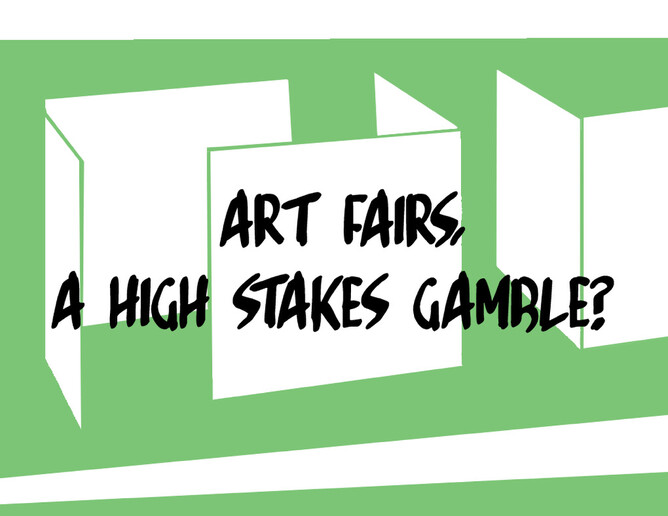With a number of art fairs in crisis, it's been time to reflect.
londonprintstudio is increasingly wary of going to Art Fairs, and we're not alone. With high stand fees, transport costs and staff / time out to factor in, more artists and small galleries are confirming that Fairs no longer provide a viable return. Even with well targetted high quality work at decent prices, it's very high risk. We know that the majority of standholders fail to break even, and things aren't getting any better. For artists and arts charities, investing the small resources they have on art fair sales is often inappropriate - unless they have been singled out in advance for serious discounts, special awards, promotion and high visibility within the Fair. Even then, it's a high stakes gamble.
At londonprintstudio we select and pack our prints and kit into a rented van. In London, there can be parking and access problems. In another city, you have to find your hotel / Airb'n'b as well, then unload and set up. Preview day comes, the opening party, and finally the show opens to the paying public. For days, thin attendance in the mornings... sometimes a sense that finding a relevant audience had been a problem for the organisers. Afterwards you pack up, reload the van and drive home, having met lots of fellow artists and galleries, but few buyers.
Many purchases at art fairs relate strongly to trends in the luxury goods, interior design and hotel markets, rather than fine art, so it can be a good idea to research your likely audience. For example, if the housing market is stalling, and people aren't moving house, it can affect affordable art sales. Selecting work that is saleable at a particular fair is essential - if you can't pick from a variety of work to suit the Fair (theme, colour, size), then the risks go up. Where you are selling to the general public, some budgets may be tight and smaller less expensive framed prints may be easier to sell.
One gallerist said to us 'To succeed in this market you need to start with a large fortune and be prepared to end up with little money'. This is hardly a description of conventional commercial success. It is significant that even in elite fairs, few galleries exhibit year in, year out. Many younger artists and start up galleries launch with enthusiasm and get badly burnt. The most successful seem to pander to highly populist tastes. It's worth noting that only 5% of art fair attenders are in a position to purchase art works.
The art market place is changing. Creative United's The Future of the Art Market asserts that ' there is more money overall but it is being distributed amongst fewer artists and sellers. Over the 2008–18 period, the volume of sales has shrunk – by 9% according to Art Basel.' The lower end of the market is suffering in consequence. In the UK, Brexit uncertainty has been toxic and '....a general uneasiness has been caused by Brexit:.' The Deloitte Art and Finance report 2019 attributes a 24% drop in sales in the London auction market to Brexit.
It's good to show your work, meet new people and expand your network at art fairs as a one off. But over time, for individual artists and small galleries, there has to be a less costly, more environmentally friendly way of showing and selling work collaboratively.
More free reading:-
The Art Basel and UBS Global Art Market Report 2019
Creative United The Future of the Art Market 2020 by Lucy Rose Sollitt
The Deloitte Art and Finance report 2019
.

